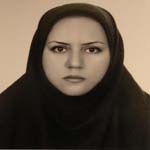Finding the equivalent of the Persian word ‘Khomahan’ with today known iron ores based on its being a dyestuff and what is written in Persian historical literary texts
In archeometry studies, one of the hidden angles that can be the great help in the field of accurate understanding of ancient materials is the study of ancient texts and finding the equivalence of them with modern ones. Before an Iranian archaeologist wants to study a historical sample, it must be determined what information is available in ancient Persian texts about that sample .The first step in identifying and obtaining this information is to understand the vocabularies and words relevant to that science. But sometimes words from the Persian language are outdated and alternatives from another languages are nowadays designated for that word, which are well known and used in scientific societies and Their Persian form is unknown, so the obscurity of today's obsolete equivalents makes some of the information relevant to it still ambiguous in interpreting ancient texts and remains unknown. by finding the ancient name of the words and their equivalence with the well-known words of today, valuable information can be obtain in a wide range of studies. Khomāhan is one of these ancient and obsolete Persian words that has been defined only in the historical books of medicine and minerals, dictionaries and in Persian poems and these definitions only emphasizes that it is an iron ore. In these books two types of male and female are mentioned for it. It is said that female khomāhan is a reddish- black stone that, when sinking in water, red color will be appeared and It has been used as a red pigment like a vermillion, and the male khoamāhan is a black stone and when sinking it in water yellow color will be appeared, it has been used as a yellow pigment like an orpiment. In Persian poetry also is mentioned about magnetic or black khomāhan. Black khomāhan is also a kind of a very black colored stone and is considered to be the best kind of khomāhan. Thus, the word khomāhan is referred to three stone but it is not known precisely which word or equivalent is known today. In this regard, female khomāhan that has been used in ancient medicine in Iran is found from perfumery and experiments have been carried out in order to prove what is said in ancient texts about female khomāhan. This research shows that female khomāhan is the equivalent of the Latin word hematite. According to researches, this term in ancient Iran, in addition to hematite, was also referred to as other iron ore. In this study, it was found that the “male khomāhan” is equivalent to today's known mineral of the European word "goethite" and the word “magnetic and black khomāhan” refers to the word “Magnetite”.
-
An Investigation into the Characterization of the painted wooden Shir-Sar of Taqavi house in Gorgan
*, Danial Harandi, Fathollah Niazi, Seyyed Mohsen Haji Seyyed Javadi
Iranian Journal of Wood and Paper Science Research, -
The internal transformation of two romantic concepts (naturalism and personal feelings) within the scope of politics in the works of Forough Farokhzad and Simin Behbahani
Farzad Rostami*, Mahboobeh Khorasani
Journal of Literary Research, -
An Investigation into the Characterization of Gypsum Mortar of Three Historical Periods and Four Climates of Iran
*, Seyyed Mohsen Haji Seyyed Javadi, Maryam Mosleh
Journal of Research on Archaeometry, -
Investigating the role of animals in the common proverbs of Rostam city
Gholamali Mohammadi, Atamohammad Radmanesh *,
Journal of Iranian Regional Languages and Literature, -
The reflection of the musk color in Persian literature and investigasian of its being dyestuff in old handwrittings and paintings and its accompaniments in Shahnamah
, Ata Mohammad Radmanesh *, Mahbobeh Khorasani,
Journal of Kavoshnameh in Persian Language and Literature, -
Investigation of The poet and whole text of the historical inscription in the eastern vestibule of Yazd's jaame mosque
, , Maryam Mahmoudi
Scientific Journal of History Research,



